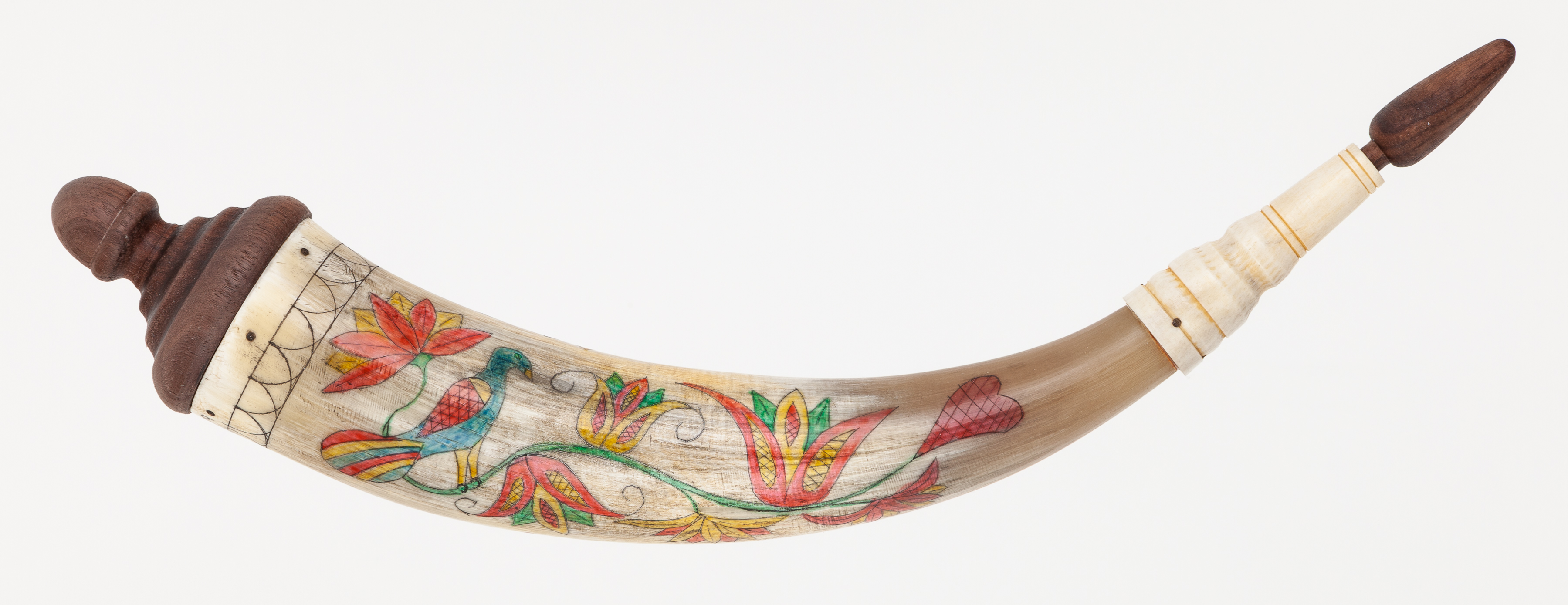Mark, I love your work! In particular this one:

It is very instructive to study how you intentionally overshot some of your scrimshaw lines to create something reflective of the style and period. Also of note, in that same light, is the uneven color application and the restraint shown in how far you took the horn down in polishing. Pictures like this are invaluable to learning what a horn should look like.
Just to clarify things in my own mind:
1. Mask off your horn, draw your design on the painter's tape, and cut it out with an xacto knife. Follow your xacto cuts with a proper scribe if necessary.
2. Apply india ink to your scribed lines and buff out the high spots with 0000 steel wool. To create your border.
3. Paint your dye on within the masked off areas.
4. Wait for it to dry and then wipe on a coat of Johnson's floor past or similar product.
Assuming I am in the right direction thus far(?):
1. I know that the black lines will show up if a lighter dye is applied over them, but would that principal stand up to scrutiny? Should I look at it like an 18th century coloring book or were they more demanding than that? For example, applying the black lines over the polychrome color or removing the polychrome color from the black lines?
2. I hope I'm not overreaching with this question but it would be a tremendous amount of help, what brand of dyes and colors do you prefer? And what do you use to dilute them? And do you know if they are safe to use around potassium permanganate?
3. Instead of india ink or pencil lead, could a fine tipped black sharpie be used to darken scrimshaw lines? It seems that would be a lot easier and cleaner, but would it react poorly with the other dyes, not hold up over time, or not look authentic?
Thank you again for your help.

